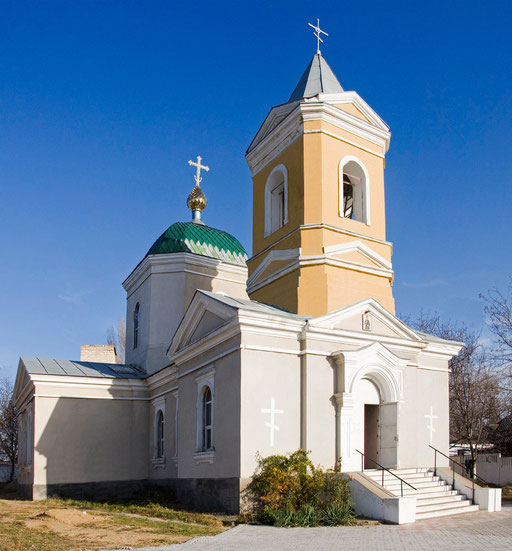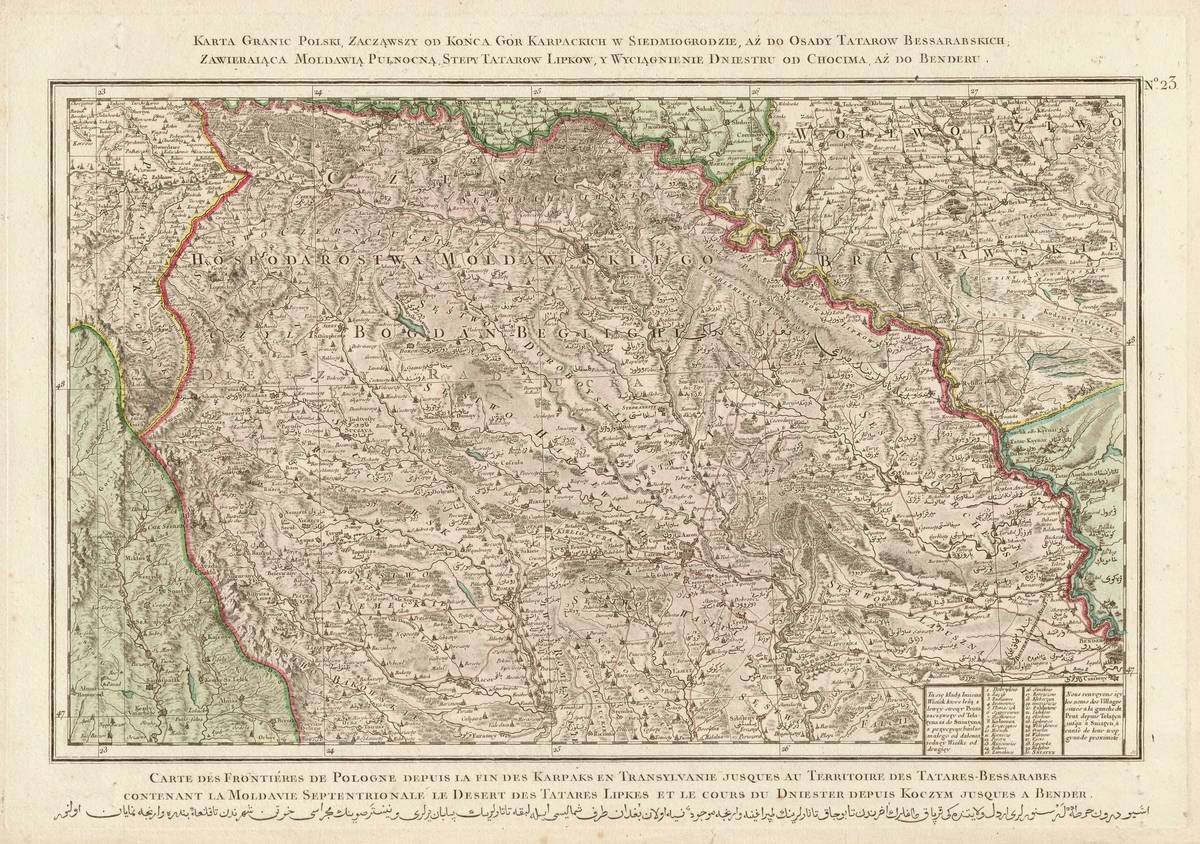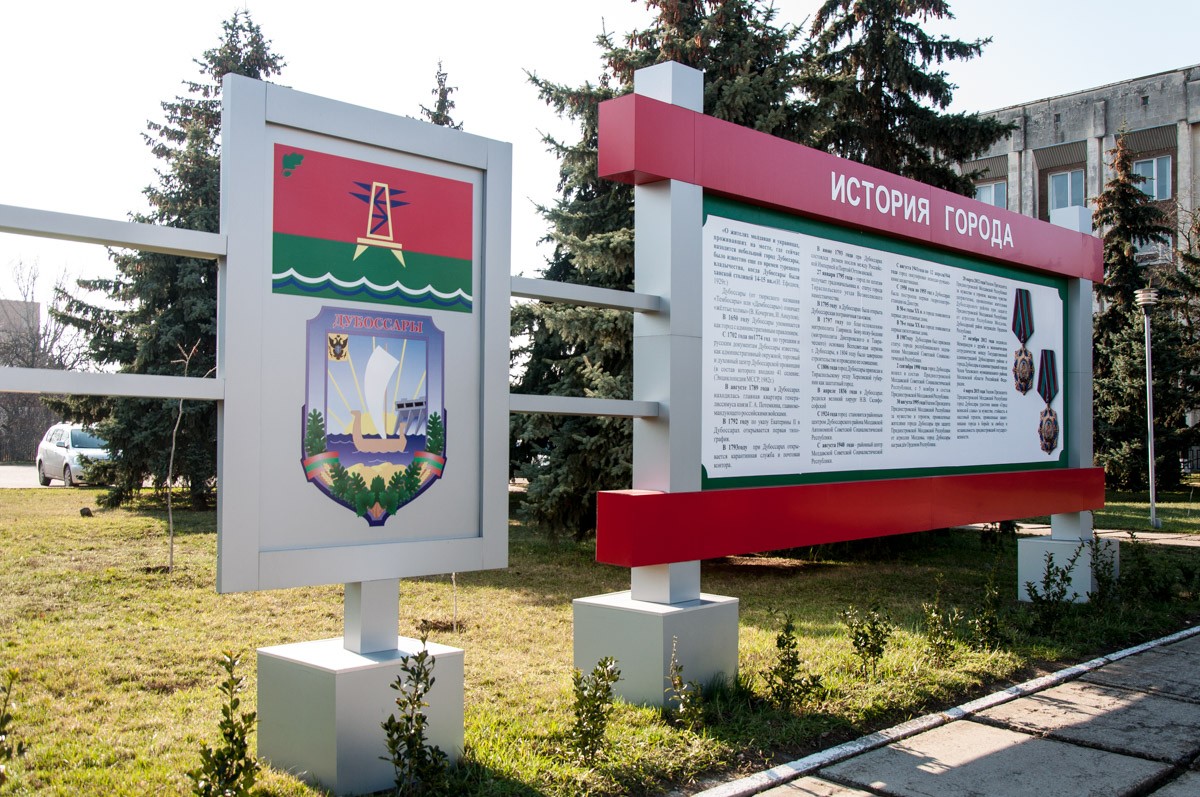On October 27 Dubossary, one of the oldest town in Pridnestrovie, which history is as fascinating as it is mysterious, celebrates the City Day. The question about Dubossary`s age will perplex any local historian, and no historian can give an unequivocal answer to it. Why the mysterious past of the famous town is still waiting for its explorer, we will tell in five stories
Temple of the new tradition
The day of the city in Dubossary is celebrated on the St. Paraskeva Serbian day, a Christian saint, especially revered in the countries of the Balkan region. This date, according to the Dubossary Historical Museum, is associated with the tradition of the temple festival, while the specific historical point of town founding is unknown. In Dubossary, however, if you do not take into account the suburbs, the Cathedral Council of All Saints operates, which celebration in the Orthodox tradition is considered to be rolling (in 2018 it was celebrated on June 3). In that case, how is Dubossary temple festival, which the Day of the City is intertwined with, associated with the day of Paraskeva Serbian worship? You need a small retrospective in order to understand that.
Two famous Christian churches in Dubossary are described in the Historical and Chronological Description of the Churches of the Diocese of Kherson and Tauride 1848. According to this review, the first cathedral Uspenskaya church appeared in 1780, and was rebuilt in 1809. The second, All Saints Parish, was founded in 1797.
In the 1930s, both churches did not escape persecution as part of anti-religious propaganda in the USSR. The Uspenskaya Church was destroyed, and the Temple of All Saints was closed. For a while, various institutions were located in its building until the church was reopened in the 1940s. It was re-consecrated in honor of the Christian Saint Paraskeva Serbian by the Dignitaries of the Romanian Orthodox Church, but in the 1950s a new wave of the churches liquidation began and religious services in the Paraskeva church were banned. Its revival began in the period of “Soviet perestroika”, and in 1995 it became the main temple of Dubossary Vicariate. Three years later, the original historic name of all Saints was returned to the cathedral.
photo by Alexander Palamar

Nevertheless, the tradition of Paraskeva Serbian veneration has remained: there is a chapel (part of the religious space) of St. Paraskeva in the temple, and the day dedicated to it remained in memory of the Dubossary people as a holiday of the city temple.
Dubossary age is not set yet
This town is considered to be one of the oldest settlements in Pridnestrovie. However, its exact age is still unknown. Historians and regional ethnographer suggest various versions about that.
In the chronological table of the two-volume History of the Pridnestrovian Moldova Republic, the year 1702 is considered to be the year of the first mentioning of Dubossary, in the context of the story about the slave market operating here. However, there are no specific references to the document in the book.
A German nobleman in the service of the Swedish king Karl XII Erasmus Schneider von Weissentel mentioned Dubossary in his diary. In 1711, at the head of the detachment, he was going to join up with the main forces of the Swedish army, camped near Bender. His path lay through the left-bank valley of the Dniester, and among other things, Weismenthel wrote that he passed through the Tatar city of Neu Dubazov.
Dubosar was also marked on the "Map of the Theater of Operations in the Russian-Turkish War in 1737", compiled by the French cartographer Joseph-Nicolas Delille.
Dobresar is on the map of the Italian cartographer Richie Zanoni in 1772. The author also locates it on the frontier between Poland and the possessions of the Edisan Tatars. 
The historian A. Skalkovsky in the Chronological Review of Novorossiysk Territory History says that “the village of Dubossary on the left bank of the Dniester during the Russian-Turkish wars of the XVII – XVIII centuries was repeatedly the intersection of military roads, and later served as a city of military camps, a city of food depots, shops ... " That is, the researcher claims that the locality was known in the XVII century.
The website of Dubossary says that the settlement is mentioned in 1650, but it is not specified what document is being referred to. The web resource also notes that “Dobresary” are marked on the Poland map of 1667, while the exact name of the map, like its illustration, are not mentioned.
Other authors believe that Dubossary is much older. In particular, I. Eftodiyev in the book Geography of Moldova says that the city was founded as far back as the XIV century and was the “capital” of one of the Golden Horde Khan's provinces. It is not known, however, on what facts this statement is based.
The first researcher of the history of the town, Vladimir Kochergin, who wrote "Outlines on the history of the city of Dubossary and the adjacent Dniester region (Kherson province) (1648-1870)" in 1911, could not understand the time of Dubossary appearance. He only states:
“Dubossary is the oldest settlement. It originated long before it became known in the literature”.
Thus, the history of Dubossary remains a terra incognita, and, consequently, “an open field” for researchers. It is unlikely that we will be mistaken if we dare to assume that in its complexity the topic is a candidate for a dissertation.
Yellow hills, boats and the bridge
There is also no consensus on the meaning of the word "Dubossary". Some researchers believe that it is of Turkic origin and is translated as "yellow hills". However, the evidence to support this version has not been given yet.
According to other data, the word "Dubossary" is of Slavic origin and denotes builders of dubas boats. Followers of this version cite the message of the book “The Second Turkish War in the Reign of Catherine II” author, Colonel A. Petrov as the basis, that small ships and galleys were built for military purposes in Dubossary.
M. Sergievsky, a linguist, adheres to a different opinion: the name Dubossary is derived from once existing bridge of dubas boats.
“I suppose the first county town to be at Dubossary”
Dubossary became a part of Russia after the Yassy peace in 1791, which ended the next Russian-Turkish war. The city became part of the frontier Dniester defensive line.
“At the same time as the Tiraspol fortress, another fortress was laid two miles from the Polish border - near the Moldovans and Ukrainians settlement, still under the Turkish rule, known as New Dubossary, unlike Bessarabian Dubossary. At present, there are no traces of the former fortress” - A. Schmidt military-statistical review of the Kherson province says.
For some time, in the period of 1791-1792, the governor of the Ekaterinoslav region, Vasily Kakhovsky, had been in Dubossary, having received here about 60 decrees from Empress Catherine II on the administrative structure of the “newly acquired lands”. Kakhovsky, in turn, called Dubossary the first district city of the region:
“I suppose the first county town to be at Dubossary. This place will, by its fame [...], contribute without any doubt — and in a short time — to the multiplication of the people in the newly built city ... Above that, if Your Imperial Majesty would be pleased to establish customs and quarantine at this city.”
Dubossary on the map of the newly acquired area from Porto Otomanskaya and attached to the Ekaterinoslav governorship in 1792
General Alexander Suvorov, one of the founding fathers of Tiraspol, also visited Dubossary. He was entrusted with the inspection of the Dniester defensive line being built, and after laying down the fortress, around which the future capital of Pridnestrovie would later grow, Count Suvorov-Rymniksky headed upstream. From Dubossary, on September 1, 1793, he gave a written order about the troops coming to the winter quarters.
The name of the famous representative of the "flock of glorious Catherine eagles" is a local landmark. Not far from the city, in the Pererytom tract, a tree has been growing for 230 years, which is called the Suvorov Oak. The diameter of its trunk can be compared with the hockey defender height - 190 centimeters.
Suvorov, however, did not stay here for long, but, even while in Kherson, he continued to administer the deployment of troops in Pridnestrovie. According to the military registers signed by the general, the Bug Infantry Regiment had been in Dubossary for some time, and then there had been Chernigov Carabinier and Alexopol Infantry Regiments.
At the same time, the Olviopolsky Post Office was transferred to Dubossary, and in 1792, by decree of Catherine II, there was opened the first printing house in the region. The document can be viewed in the monthly magazine "Russian Antiquity" for the month of December 1900:
Underground Dubossary
One of the local mysteries are underground structures. There is no consensus about the origin of them. For the first time they were talked about when the cases of major sink-holes and soil subsidence in the historic part of Dubossary became more frequent. In the media, there were reports of mysterious tunnels and basements under the town, built long before the appearance of the settlement.
“Usually these are rooms of about 3x5 meters. From them narrow and low (about 1x1.5 meters) passages lead to different directions. Nearly always they are incorporated by a stone lying. In some cases, the passages have a length of up to 15-18 meters (before the dam)” - we read in the Dubossary newspaper Zarya Pridnestrovya of July 25, 2008.
This article, authored by the chief architect of the Dubossary district, also states that the passages go along the streets, and some of the basements in volume reach large values - 100-150 cubic meters.
Urban legends say that tunnels and basements appeared in the Tatar-Turkish period, and were used for military purposes. There is also a version of the economic purpose of these structures: the city was located at the crossroads of trade and military routes, which means that the basements could serve as warehouses. There is also a “version of the asylum”: the former inhabitants of Dubossary took refuge in basements connected by passages, in case the settlement was attacked or other danger. And, finally, the “religious version”: Christian services could be held in the dungeons during the persecutions of the church.
Video of the First Pridnestrovian TV channel about Dubossary Cellars
No less interesting are the versions of who built the Dubossary dungeons and when it happened. On various Internet websites it is said that these structures were built by “Pechenegs and Polovtsy in the XI-XII century”. This statement, however, is not supported by anything, except for a reference to the opinion of speleologists. However, the speleologists of the “ABIS” club, who in the late 1980s of the last century explored the Dubossary caves, note that they did not talk about any Pechenegs with the Polovtsy. Moreover, the researches think, that nomads, such as the Pechenegs and Polovtsy, could not build such communications.
“We began by studying the archives. Actually, Dubossary was considered to be town in the XVIII century, and in the XIX it became a river port for some time. It is from here that the very cellars are taken from. On the slope of the coast, where the barge could dock, local merchants built warehouses with access to the berths, so as not to drag the cargo up. We drilled and traced these basements and tunnels to them” - speleologist Igor Teleshman explained to Novosti Pridnestrovya.
He believes that the time of the dungeons construction is the turn of the XVIII-XIX centuries, although the researcher admits that these are only preliminary conclusions based on personal observations. In addition, speleologist noted that not all basements had been studied, which means there are still many questions.
“I do not exclude that we could have missed something, after all the technologies were not match for a modern ones” – Teleshman said.
Researchers from the “Podnestrovsky Historical and Geographical Society” are trying to find out the origin of these structures. The head of the organization, Alexander Gornostal, says that there are more than enough questions in the history of “Underground Pridnestrovie”.
“In our opinion, the version on the use of underground structures of the town for economic purposes (port, berths, warehouses, etc.) cannot be satisfactory for the subject of this study simply because similar structures are currently located in Tiraspol, Bendery, Grigoriopol, Rashkov of Kamensky region, and often in places, to put it mildly, difficult to combine technically with the potential river berths of the Dniester” – he told in an interview given to Novosti Pridnestrovya

According to him, the theme of these dungeons has not yet been developed and has not been studied at a decent research level. Gornostal thinks that today there is a considerable number of branched underground utilities of various scale, length and level of preservation. They are built on the same architectural principle. The researcher is confident that only interdisciplinary research involving specialists from different areas, primarily archaeologists and architects, can clarify this undeservedly forgotten, but quite tangible part of our republic history. Who, when and what for built these dungeons, remains a mystery, under the veil of which can hide an interesting and amazing story.
Alexander Koretsky












